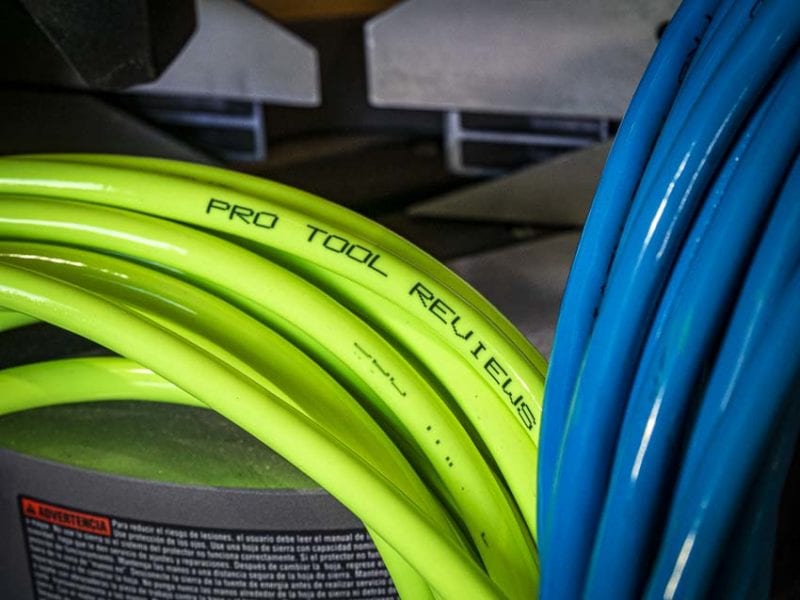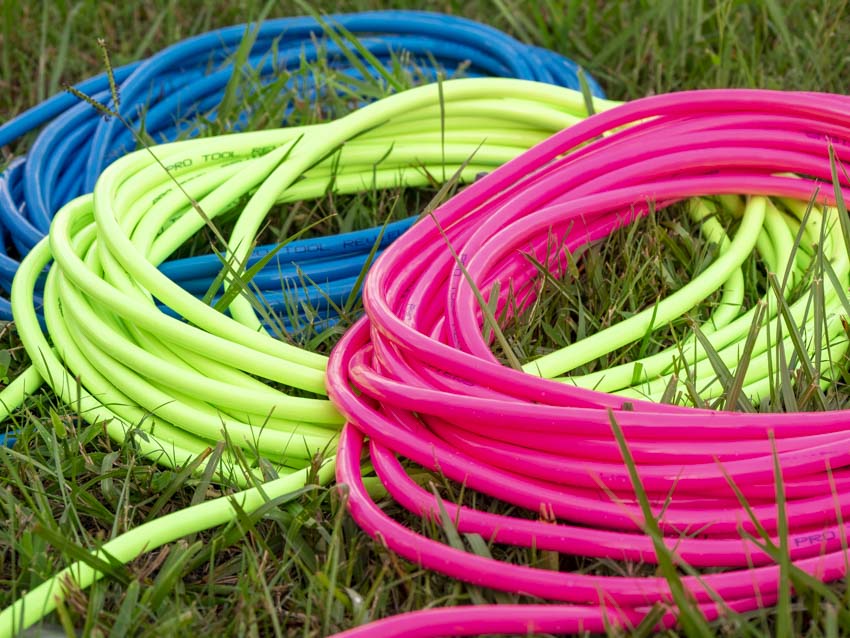While the world of cordless tools is expanding, the use of corded tools for construction and home renovation is still necessary. That brings about the common question: What kind of extension cord do I need? The best rule of thumb is: The heavier the cord the better.
You’ll find that extension cords are normally available from about 18 AWG (smaller size wire) to 10 AWG (larger size wire) with lengths that may vary from as little as 6 feet to over one hundred feet. Just like choosing the right ladder for the job, knowing what kind of extension cord will make sure you have the right type. This comes in handy when you plug in your Milwaukee SawZall Reciprocating Saw from the other side of the job site.
Length Matters in What Kind of Extension Cord You Need
Lest you think that it’s all math (actually, it is) the one thing you need to keep in mind when figuring out what kind of extension cord you need is that power gets lost across an extension cord. That means that the longer it is, the less current you can safely deliver to the tool, and the thicker the wire gauge (AWG) will need to be in order to carry the required current. Remember, thicker AWG (wire gauge) is represented by a lower number).
Extension Cord Lengths and Current Chart
Here’s a “cheat sheet” on recommended electrical extension cord lengths per ampere (current) rating:
| Current (Amps) | 25 ft | 50 ft | 75 ft | 100 ft | 150 ft | 200 ft |
| 0 – 5 Amps | 16 | 16 | 16 | 14 | 12 | 12 |
| 5.1 – 8 Amps | 16 | 16 | 14 | 12 | 10 | — |
| 8.1 – 12 Amps | 14 | 14 | 12 | 10 | — | — |
| 12.1 – 15 Amps | 12 | 12 | 10 | 10 | — | — |
| 15.1 – 20 Amps | 10 | 10 | 10 | — | — | — |
Also, check out our Extension Cord Size Chart for even more information on how wire gauge and amps interact.
Cost in Relation to Size
Of course, the cost is a function of length and wire size so the larger the wire size and the longer the cord, the more it will likely cost. The reason the heaver cord is a better choice is that it will allow you more flexibility in what you connect to the cord without damaging your power tool or burning up the extension cord (and whatever may be touching it).

What happens when a cord is undersized is that not enough electricity will flow through it due to resistance, which will cause the cord to heat up, sometimes to dangerous levels where the shielding on the cord melts and can cause a short circuit or even a fire. This is something to be avoided at all costs and is largely why nearly all power tools will include current ratings and recommended maximum extension cord lengths for power tools similar to the chart shown above.
Another thing that can happen when you have an undersized extension cord, is that the power tool that you are using, may require a certain number of volts and amps in order for the motor to function properly. Now if the cord is undersized, the tool will have to work harder and in some cases, this can damage the power tool. Understanding what kind of extension cord is needed to deliver the proper power to your tool will help you work more safely and effectively.
Like the extension cords in our featured images? They’re customized with the Pro Tool Reviews name and are made by Southwire. Check out more on them here or visit your local Southwire supplier to order yours!



